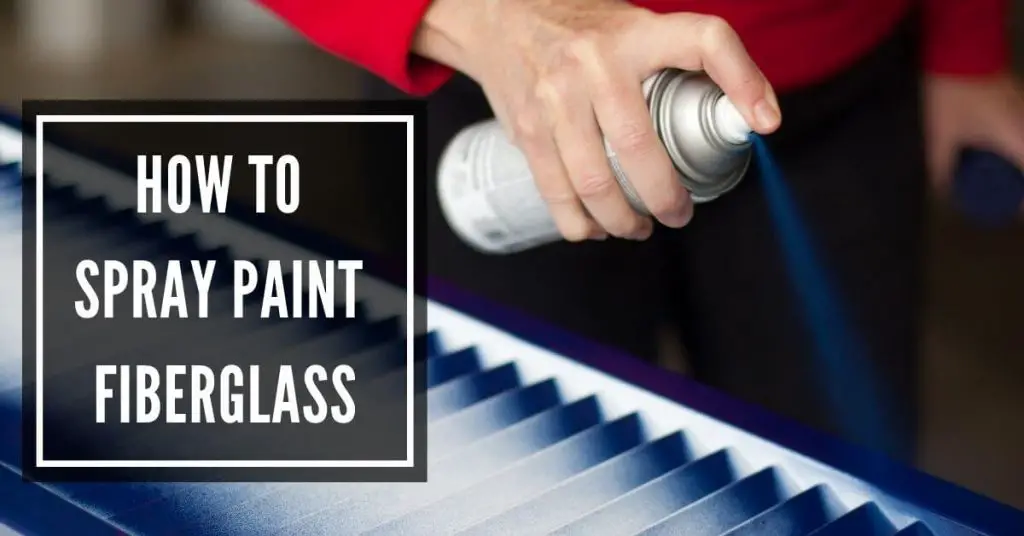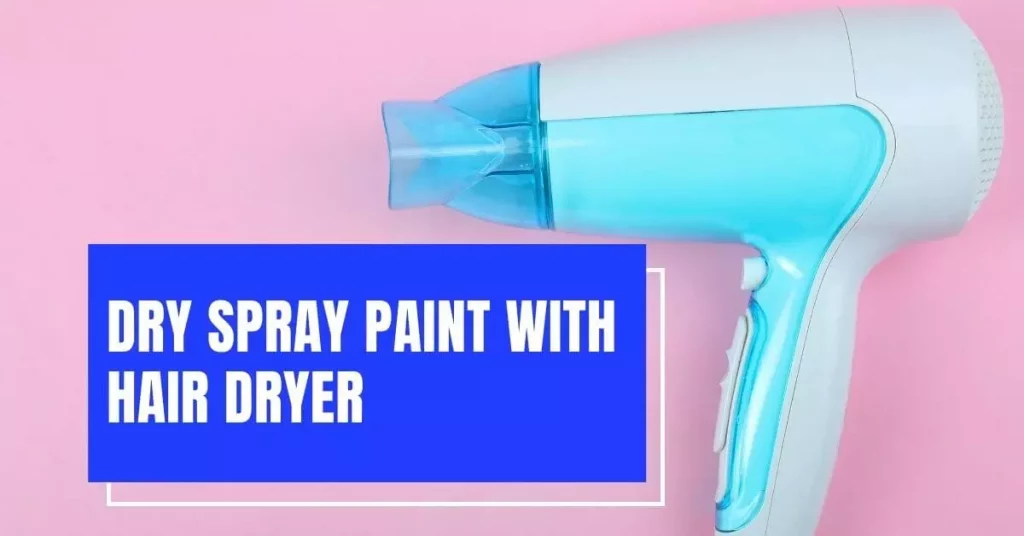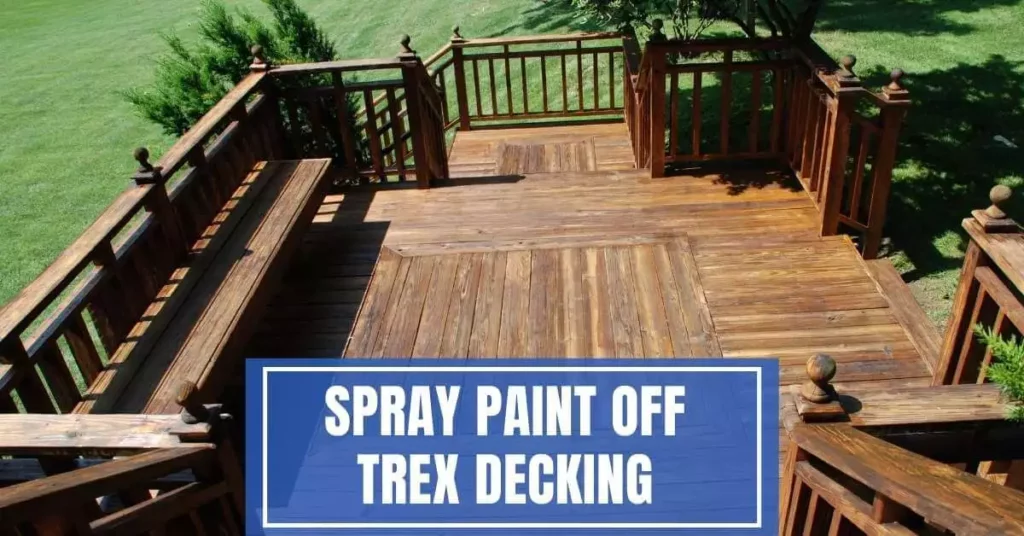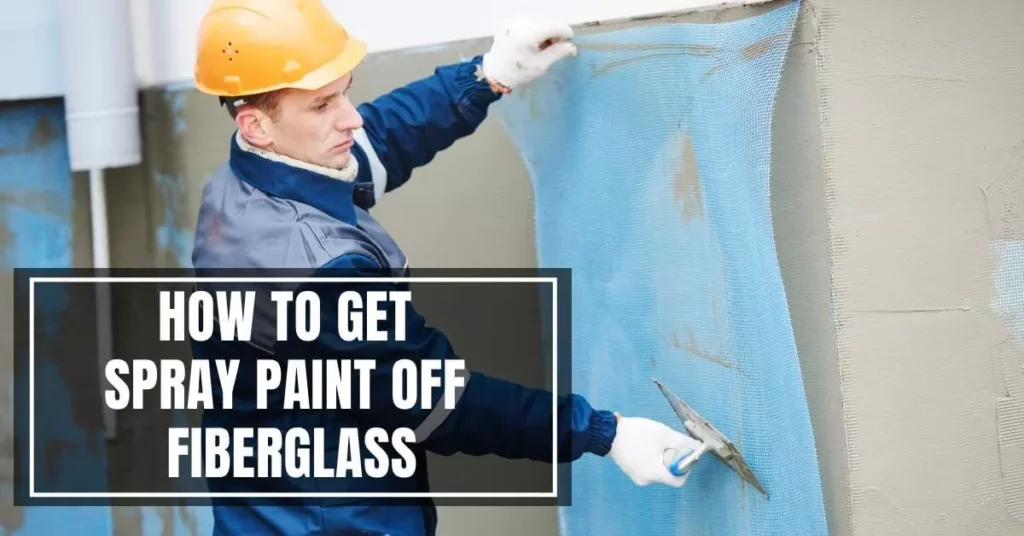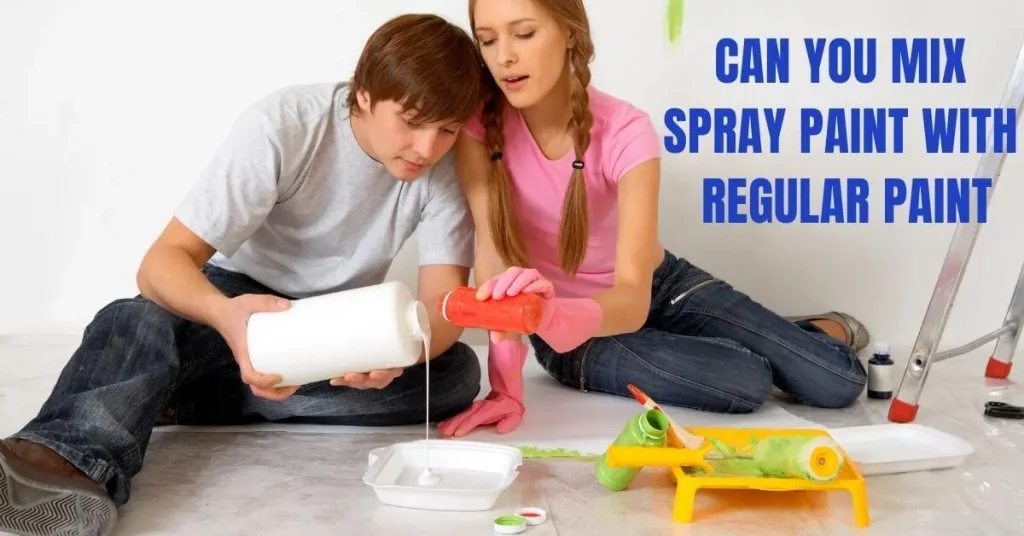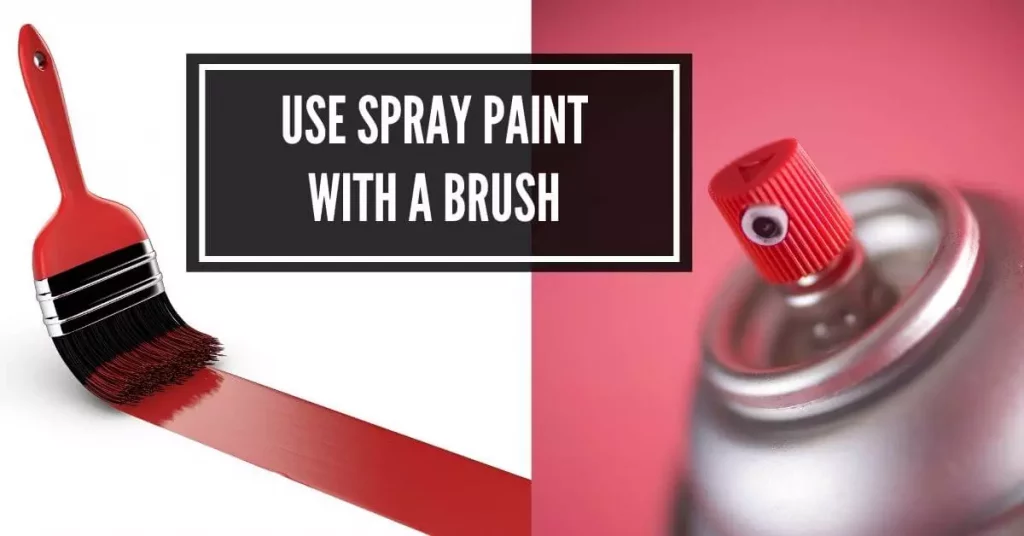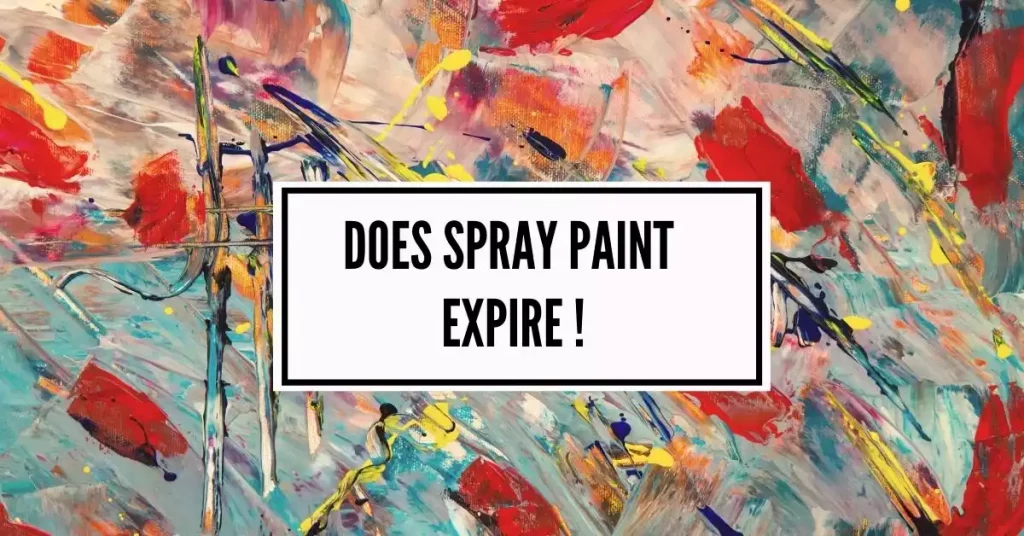Ever thought of applying spray paint on fiberglass? Spray paints are pretty versatile to use on a broad range of materials, and the same goes for fiberglass surfaces. But making it perfectly prepared and learning the right way to use it is important to get the optimal result.
Otherwise, the paint may not stick on the surface properly and crack or peel off issues. I will discuss how to spray paint fiberglass. Also, I will mention some valuable information to make your fiberglass painting project successful and easy-going. Let’s dive in!
Table of Contents
Do You Need Special Spray Paint for Fiberglass?
Fiberglass surfaces are called nonporous because they are highly smooth and sealed. Applying spray paint for fiberglass is slightly different from any porous surface. Generally, paints won’t adhere as easily as porous surfaces.
Acrylic latex paint is one of the top choices for fiberglass since they have proper adhesion, especially for slippery surfaces. It is water-based paint. Hence, you will face minimal difficulty in applying.
Plus, Acrylic latex paints are eco-friendly because they contain a minimal amount of chemicals than other paints. Additionally, this type of paint is not prone to blistering and cracking issues.
Apart from Acrylic latex paints, you can use Urethane spray paints. This solvent-based paint contains a higher amount of chemicals and is tricky to apply. But it has excellent resistant properties against wear and tear, chipping, and other damages.
How Long Does It Take to Spray Paint Fiberglass?
It generally requires 72 hours to dry the base coat fully, and additional 24-48 hours will require drying the topcoat.
However, your painting technique, the particular fiberglass surface, and the type of paint you apply will affect the total duration of painting over fiberglass.
Since fiberglass surfaces vary in objects such as boats, outdoor pools, cars, and household objects like doors, the total time will also be different.
The larger the project, the more time will be needed to finish the project. You can expect to have the same time between a household fiberglass door and a large boat.
Another important thing is the thickness of your paint. Thicker paints mean you apply heavy layers of paint. This will increase the dry and curing time of paints.
Is It Necessary to Prime Fiberglass Before Painting?
Priming before painting allows you perfectly seal the original material. This ensures no soaking for the paint. Instead, the spray paint will sit on the surface.
If your fiberglass surface has any seams, joints, natural blemishes, or discoloring effects, you can consider using a primer for the fiberglass.
However, it should be compatible with paints. It is a solid rule of thumb to use a similar brand for primers and spray paints.
Using a quality primer will help get a smooth and even coat, reducing the requirements for additional spray paints.
More than dozens of primers are available on the market; not all maintain a decent quality standard. Over the years, I have discovered some of the best spray paint primers for fiberglass. Eastwood Epoxy Fiberglass Primer is one of them, and you can try it for yourself.
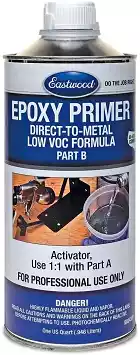
What Precautions to Take When Painting a Fiberglass Item
When you want to learn the best way to paint fiberglass surfaces, it needs some precautions. Since fiberglass surfaces are a little bit tricky to apply, you want to go through them smoothly and carefully.
To get a professional-looking finish, you need to take enough time for each step. Whether a chair, bathtub, door, or boat, you want to go slowly for priming, painting, and top-coating.
How Do You Prepare Fiberglass for a Fresh Paint Job?
To get a quality result, you want to make a good preparation before finally applying the spray paint. Below are a few practical factors you can note down to prepare spray paint on fiberglass.
a) Cleaning Up the Surface Thoroughly
How do you clean fiberglass before painting? Before painting the surface, make sure it is free from dust, dirt, grimes, and other residues. Using a piece of fabric and a soft brush appears to be a simple solution to clean it appropriately.
b) Removing All Hardware
Many things on your fiberglass surfaces may be removable. Detach as many items as you can to make your painting job hassle-free. This will save your time too.
c) Choosing the Optimal Temperature Condition
Avoid choosing highly humid or cold weather for spray painting. Choose a temperature between 18 to 32 °C (65 to 90 °F) to get convenient results.
d) Working on A Well-Ventilated Area
Working on a decent ventilated area will ensure normal drying and curing time. Also, it will reduce the chance of paint odor retention in a particular area.
f) Sanding Fiberglass for Spray Paint
The paint won’t adhere well if your fiberglass is unsmooth and glossy. So, sand the surface with various grit sandpapers based on the type of your surface.
How to Spray Paint Fiberglass: What Works Best?
The key to ensuring the success of any fiberglass painting project first is knowing how do you paint fiberglass. If you want to know how to apply paint to fiberglass, here are 7 easy steps.
Step: 1 — Adequate Cleaning with Warm Soapy Water
Apart from cleaning with a fabric, washing the surface with warm soapy water can help you to get rid of hard dirt from the surface. Utilizing a soft brush appears necessary to take off tough dust.
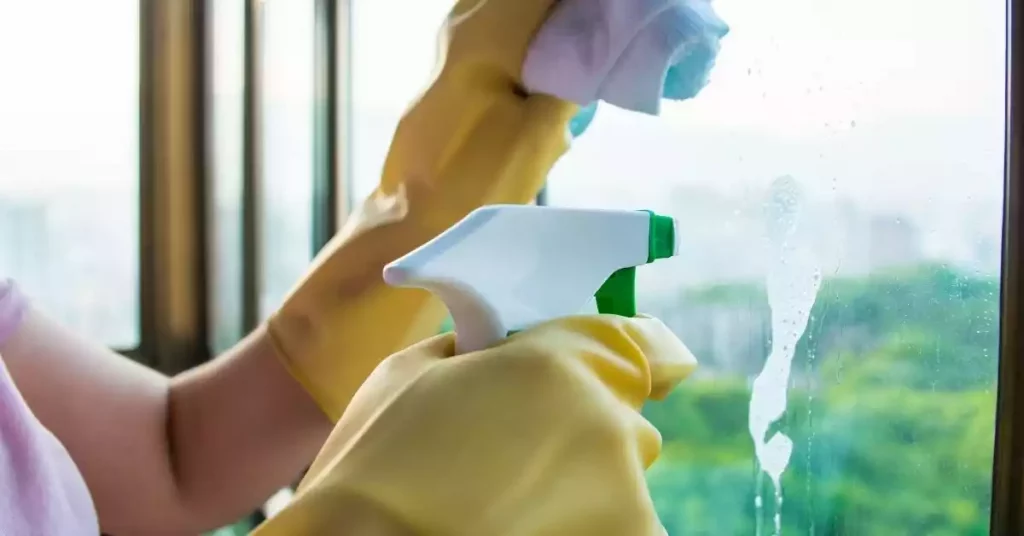
Make sure to use fresh water to prevent staining the surface. Also, rinse the object thoroughly with water to make it super clean. Don’t forget to dry it properly before hopping on to the next step.
Step: 2 — Sanding the Fiberglass Object
Wondering how to sand fiberglass surfaces? You need to make your desired fiberglass object smooth and dull before using your fiberglass spray paint.
Initially, work with 150-grit sandpaper for general purpose sanding. And then, you can utilize 400-grit sandpaper for light sanding.

Ensure to clean the surface properly and prevent stacking the fiberglass residue on the surface.
Step: 3 — Covering the Unwanted Area
Not all areas of your fiberglass object require spray painting. Covering the unwanted area with painter’s tape will ensure they remain safe while painting.
If the area is massive, you can consider using drop cloths for better coverage. But secure the corner using some heavy objects so that they don’t move while painting.
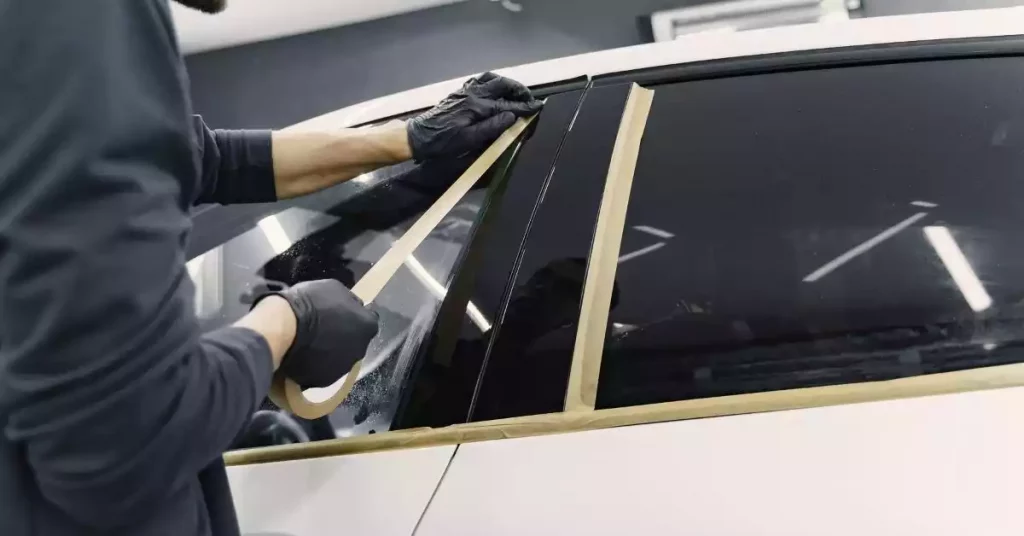
Step: 4 — Applying a Light Coat of Primer
Now, get the compatible primer, and apply a thin layer of primer. Spray the primer slowly without overdoing it. You should maintain intermittent mists.
Avoid applying continuously. This will ensure no dripping, sagging, or over application. All you should focus on is getting a professional-looking finish.
Step: 5 — Properly Drying the Primer
After applying a thin layer of primer, let it dry for 4-5 h.ours. You can stick to the instruction manual to learn about the ideal drying time.
Let it dry naturally. Avoid using any hot-air fan for quick drying. This will prevent the primer from adhering to the surface precisely.
Step: 6 — Applying the Spray Paint
Wondering how to spray fiberglass surfaces? Here comes the exciting part! Grab your spray paint. Instead of painting continuously, maintain short bursts while spray painting. Spray side-to-side motion for even coverage.
Make sure the first coat is thin. Then let it dry completely. Now, you can add the second coat. Follow the same rule for the next layer of paint. Give enough time for drying.
Finally, you can go for the topcoat if your particular fiberglass needs it. If you think the surface has already got a perfect finish without a top coat, there is no need to apply it. Let it topcoat dry adequately.
Step: 7 — Finishing Up the Painting Task
Once the paint dries properly, you can assemble the part of the fiberglass object together. Also, don’t forget to take off the painter’s tape.
Keeping the tape for a long time will add a glue effect to the surface. This will require additional efforts to remove the tape residue from the surface.
How to Make Your Fiberglass Spray Paint Last Longer: 8 Tips
Here are some top tips to get the highest longevity from your fiberglass paint.
1. Get Off the Damaged Paint
Planning to paint over the damaged paint? Leave that thought. Initially, removing the damaged paint is necessary by scraping it with the right tool. Otherwise, it will be hard to get a professional-like finish, and the paint will flake slowly.
2. Repair the Damaged Surface
When you don’t take care of your fiberglass surface for a long time, some portions may have minimal to heavy damage. It is best to use sealer coats after removing any debris and old fillers.
3. Dry Surfaces
Don’t ever make the mistake of painting on a wet surface. You should give enough time for cleaning, priming, and several layers of paints.
Giving enough time to dry will ensure better paint adhesion and long-lasting durability. Or, you will end up having poor paint results.
4. Use the Right Technique for Painting
Just because you have the best spray paint and primer for fiberglass boats or other objects doesn’t mean your painting results will be precise.
Maintaining the proper painting technique and using the right paint color and strokes are crucial to getting your expected result.
5. Select High-quality Spray Paints
We have a tendency to save money. But that doesn’t mean we’ll buy spray paint that is of poor quality. They neither last longer nor provide a quality finish.
Investing in top-quality spray paints will aid you in getting a commercial-grade finish. They may be slightly pricey. But you will get what you paid.
6. Use All the Necessary Tools and Materials
Just because spray painting requires minimal tools doesn’t necessarily mean you won’t use additional tools. Using good-quality tools and materials will have a noticeable impact on the longevity of fiberglass paint.
7. Choose the Perfect Weather
Everything has a perfect time. And so does the fiberglass paint. Avoid painting in extremely cold, windy, and hot weather. These environmental conditions will affect the adhesion and curing time for any paint you use.
8. Waxing the Painted Surfaces
If your fiberglass object is exposed to outside environments, different pollutants can affect the paint finish over time. Using an automotive paste of liquid wax will protect the painted surface for a long time while ensuring a bright shine.
What Tricks to Follow to Get A Flawless Finish?
All of us strive for professional-grade paint results. But do we follow the same approach professionals do? Here are some simple tricks to get a flawless finish.
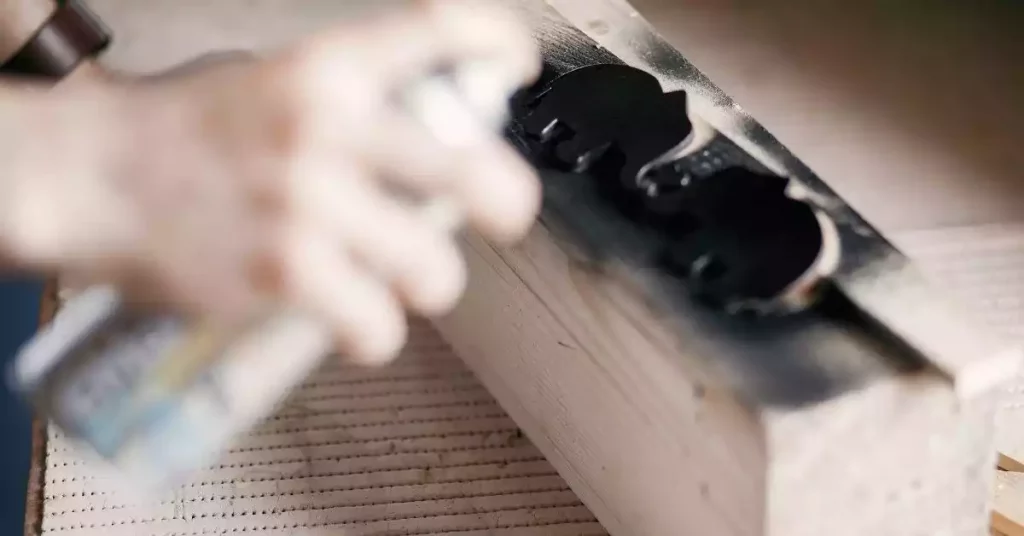
Take Care of Scratches and Small Holes
Old fiberglass surfaces are likely to have scratches and tiny holes. Applying spray paint over such things won’t give you a flawless finish. It is crucial to use fillers or any similar compounds to take care of scratches and small holes.
Sand Between Coats
Most fiberglass surfaces are okay with sanding before applying paint. But a few of them may need sanding between coats. It is mainly needed when you notice paint wrinkles, ridges, or bubbles after painting one or several coats. Sanding will fix such spray paint mistakes.
Stick to Simple Steps
Avoid following complicated steps if you are a beginner on the spray paint journey. You need a decent time to become more skilled.
Mistake to Avoid for Spray Painting on Fiberglass
Be cautious about your mistakes. Even one mistake can ruin the entire spray painting project. Below are a few usual faults to keep yourself away from while spray painting on fiberglass surfaces.
- Don’t choose the wrong spray paints. It should be compatible with fiberglass.
- Avoid using any old or expired spray paint.
- Clogged Nozzles should not be used. It will restrain you from getting a professional finish.
- You should not apply spray paints too lightly or too heavily. A moderate approach seems the best.
- Don’t spray the next coat until observing the current coat conditions.
FAQ
Can You Paint Directly Over Fiberglass?
Yes, you can paint directly over fiberglass. But priming is a better option to get quality and long-lasting results.
Do I Need to Sand Fiberglass Before Painting?
Sanding on a fiberglass surface will make the surface smooth and help you to get a nice sleek finish.
Does Spray Paint Stick to Fiberglass?
Fiberglass surfaces are a little bit slippery and nonporous. Using the right spray paint and primer and making enough preparation will ensure better adhesion.
How Much Does It Cost to Spray Paint Fiberglass?
The price can be anywhere from $200 to $1500 based on the fiberglass surface and how much preparation is required to make it ready before painting.
How Long Does It Take Spray Paint to Dry on Fiberglass?
It may take around 48-72 hours to dry fiberglass spray paint based on the layer thickness and environmental conditions.
Final Thought
A significant difference exists between normal painting and spray paints. Compared to other surfaces, fiberglass is slightly tricky to apply spray paints. Knowing how to spray paint fiberglass correctly will help you get the job done successfully.
I have mentioned all the necessary steps, tips, and tricks to spray paint on any fiberglass surface smoothly. Getting the best outcome requires you to follow them. Hopefully, you have learned a few useful details from this post to maximize the success of your painting project.

Even though I have 10+ years of experience in the painting business, I am always trying to learn the latest coloring methods. I have been into colors since my teenage days. I spent a lot of time experimenting with new painting methods on multiple surfaces. Now, I want to spread my knowledge through my blogs and articles.

